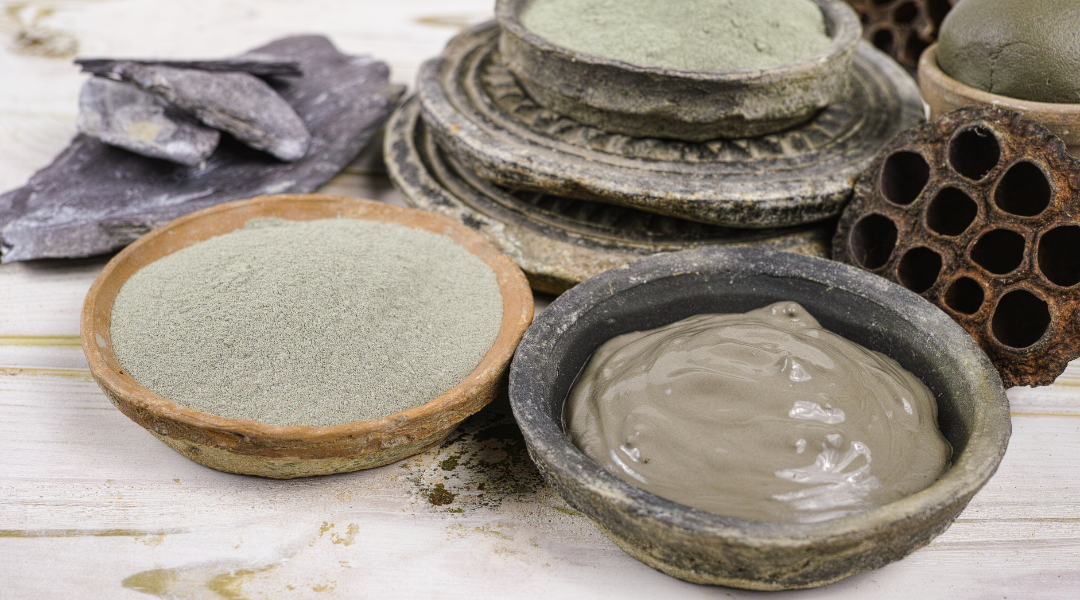Will This Irritate My Skin? How To Read A Skincare Ingredient Deck Before Buying
Finding safe, skin-friendly ingredients is just as important as finding the nutrients, vitamins, and minerals your complexion needs to be healthy, balanced, and radiant!

Most skincare brands talk about ingredients… but very few talk about ingredient decks (big difference).
It’s easy to “play the hits” and highlight popular ingredients like vitamin A, collagen, & astaxanthin (we do it all the time, there are highly potent ingredients that “lead” our formulations)...
But it’s ALSO important to look at what else is happening in the overall formulation — to see if the product is safe, healthy, and can help create visible, lasting, radiant results for your complexion.
The moisturizer that proudly features “vitamin A” on the front label may hide pore-clogging synthetic ingredients on the back label. The new eye cream you’re excited to try may contain toxins that irritate your skin — making you wish you invested your money into a safer alternative.
We’ve spent 11 years crafting meticulous formulations that nourish, condition, and heal the skin. When creating something new, this basic philosophy informs the process:
Even the most powerful ingredients deserve (and need) a strong supporting cast.
We judge products by the ENTIRETY of their ingredient deck. We hope you do the same. Top to bottom, the formulation should feed your skin nutrients… not toxins.
This article will help you better understand what to look out for when reading ingredient decks — so that you can make informed choices about your health and get the best results possible from your skincare routine.
Avoid These Skin-Irritating Ingredients
Alitura products are toxin-free. Unfortunately, this is far from the “norm” across the cosmetics, skincare, & beauty industry. According to this analysis of research, “88 chemicals in more than 73,000 cosmetic products have been identified as toxins that cause headaches, dizziness, skin irritations, allergic reactions, and chronic diseases such as cancer and reproductive system disorders.”
The presence of these common chemicals in our daily lives is leaving its mark.
This 2019 study found that:
-
The age-standardized incidence rate (ASIR) of skin conditions has continued to increase from 1990 to 2019
-
New cases of skin and subcutaneous diseases have shown substantial yearly increases in both men and women
-
The overall burden of skin diseases is anticipated to increase globally
Over this thirty-year time span, the researchers identified an 18% increase in the incidence of acne — so if you feel like your breakouts are getting worse, you’re not alone (this might help)!
While pollution and environmental stressors have certainly contributed to this increase, the toxins found in the self-care industry also play a role.

Common Toxins Found In Skincare
Hiding in plain sight, here are toxins to watch for when reading a product’s FULL ingredient deck.
Formaldehyde
Formaldehyde is classified as a human carcinogen by the International Agency for Research on Cancer…
And yet, it can be found in everyday self-care products.
According to the Campaign for Safe Cosmetics, these ingredients are direct formaldehyde releasers:
-
DMDM hydantoin (found in lotions, sunscreens)
-
Quaternium-15 (most sensitizing, found in mascara, lotions)
-
Imidazolidinyl urea
-
Diazolidinyl urea (releases the highest amount of formaldehyde)
-
Polyoxymethylene urea
If you see any of these ingredients on the deck… it’s time to make a hard pass.
Exposure has been linked to:
-
Cancer risks including leukemia and nasopharyngeal cancer
-
Allergic contact dermatitis and skin sensitization
-
Respiratory issues, eye irritation, and nervous system problems
-
Reactions at concentrations as low as 250 parts per million in sensitive individuals
Formaldehyde has no place on your skin or in your body. We are mortal enemies with Formaldehyde.
Phthalates
Phthalates are a massive red flag in skincare and personal care products. Many popular brands are yet to get this memo… despite recent scientific research revealing their health impacts.
“Diethyl phthalate (DEP)” is the one you’ll see most often — one study found it in 103 out of 252 tested products, with the highest concentrations found in fragrances.
Phthalates can interfere with hormone production & signaling, which can impact essential bodily functions like growth, metabolism, and reproduction. As a consequence, this known endocrine disruptor is most dangerous during prenatal & early postnatal development… so pregnant mothers should especially take note!
Propylene Glycol
You’ll find this common emulsifier while reading popular ingredient decks… but you won’t find it in ours.
At high concentrations, this colorless liquid is used as antifreeze (maybe not something you want associated with your favorite skincare product). In clinical testing, this emulsifier has been shown to cause both irritant and allergic contact dermatitis.
PFAS (Per- and Polyfluoroalkyl Substances)
These toxins are commonly found in moisturizers & cleansers, and are notorious “forever chemicals”. But we can all pray for a day when we don’t have to watch out for PFAS.
The FDA must assess the safety of PFAS by the end of 2025 (let’s hope they make the right decision) and California’s PFAS-Free Beauty Act is now in effect. But in the meantime, we still have to be mindful of poly-fluoroalkyl substances when assessing ingredient decks for safety.
The EPA has associated PFAS with decreased immune system function, liver damage, altered metabolism, and even cancer.
Exposure through the skin “causes harm similar to ingestion” (which is no surprise, as our skin is a “second mouth”). Once in the bloodstream, these PFAS build up & do not break down… accelerating the concerns listed above. Yikes.

Toxic Preservatives
Shelf life is important… but so is protecting your skin. If an ingredient deck includes these toxic preservatives, it begs a closer look.
Methylisothiazolinone (MI) & Methylchloroisothiazolinone (MCI)
Isothiazolones like MI & MCI are a “go-to” preservative in the skincare industry… but they have been shown to irritate skin. MI in particular exhibits high acute toxicity through dermal exposure… as its compounds activate our body’s TRPV1 irritant receptor, leading to sensory hypersensitivity.
Elevated transepidermal water loss, skin inflammation, and inflammatory cell infiltration in the dermis are also common concerns associated with MI & MCI.
You may think this is fine at low concentrations. But even at a typical 100 ppm, this preservative has “caused an unprecedented high rate of sensitized individuals in Europe” according to the EU’s Scientific Committee on Consumer Safety.
Parabens
You can find parabens in shampoos, conditioners, lotions, and facial cleansers… and they can mimic estrogen in the body, interfering with hormone regulation.
Common parabens include:
-
Methylparaben
-
Ethylparaben
-
Propylparaben
-
Butylparaben
The big problem with these unnatural preservatives is they can penetrate our skin’s barrier and stay there unmetabolized for a long time. Over time, this build-up can potentially decrease cell proliferation or alter the cell morphology of our keratinocytes — which can influence skin aging.
Because parabens have a difficult time metabolizing, even “small amounts” compound over time. Cumulative exposure from multiple products may “lead to the development of unfavorable health outcomes.”
A Safe Alternative To Toxic Preservatives
We use natural preservatives like Colloidal Silver, Raw Manuka Honey, Leuconostoc/Radish Root Ferment Filtrate & Lactobacillus. These ingredients keep our skin elixirs fresh over their recommended shelf life while ALSO offering unique benefits to your skin.
We also package most of our products in Miron Glass, which works as a natural preservative in its own right. This violet glass blocks the full spectrum of visible light while allowing beneficial light frequencies to pass through.
This helps prevent oxidation and protect the potency of our ingredients over time.
Why Are Toxins So Common In Skincare?
Hey, PFAS “forever chemicals” can artificially imitate the smooth, “silk-like” feeling people look for in a moisturizer… so maybe it’s not all that bad?
We joke, but this is the logic for many popular skincare brands.
Unfortunately, using toxins like PFAS, phthalates, and formaldehyde allows manufacturers to cut costs and churn out more products. These chemicals can sometimes even be a shortcut to fast results… coming at an undesirable long-term cost. And for brands that don’t prioritize the freshness & increased potency of small-batch skincare… these synthetics ensure products can sit in the warehouse for months & YEARS before they arrive on shelves.
Around here, we don’t cut corners with toxins.
Who needs PFAS when you can enjoy the actually smooth & silky finish of Hawaiian Beeswax and Organic Olive Oil?
Who wants to apply an endocrine-disrupting synthetic fragrance when we have pure essential oils like Wildcrafted Vanilla & Sandalwood?
Who would want to rub plastic BPA exfoliants into their pores… when mother nature can resurface & remove dead skin cells with rounded Cherry & Olive Pit Exfoliants?
Top to bottom, these are the all-natural, innovative ingredients you will find in Alitura ingredient decks.
We are proud to be held to a higher standard. Our products have been designed to nourish your skin with beauty-enhancing, anti-aging active ingredients… without “baking” in toxins that ultimately do more harm than good.
We invite you to take a look at our full ingredient decks, do some independent research, and assess if our formulations are right for your skin.
Together, we can look out for the health of everyone… and create a world where toxins and harmful chemicals are not welcome around our skin!
Disclaimer: Statements contained herein have not been evaluated by the Food and Drug Administration. These products are not intended to diagnose, treat and cure, or prevent disease. If you have a pre-existing skin condition, please consult a physician prior to use.







Leave a comment